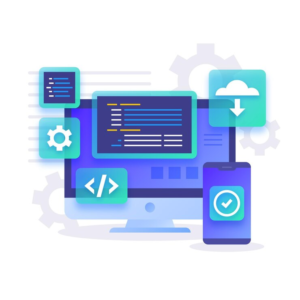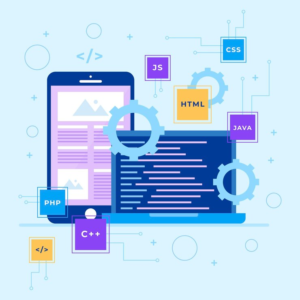With the increasing popularity of as software as a service (SaaS services developers must tackle building web applications that adapt to business expansion. For SaaS development Python is a great option because of its scalability and ecosystem of tools.
We will examine efficient techniques and strategies for developing Python web solutions to facilitate fast expansion in a SaaS system while keeping quality high and expenses low.
Choosing a Suitable Python Web Framework
The first key decision point for a SaaS development company is selecting a Python web application framework tailored for scalability in a SaaS setting. There are several solid options:
Django - A batteries-included framework providing an ORM, template engine, and admin interface out of the box. Ideal for rapid development but can require more customization for large-scale deployments.
Flask - A lightweight framework without batteries included. Flexible to customize but requires more initial setup. Easy to scale horizontally with Celery workers.
Pyramid - Built for large apps and modularity with composable components. Good for complex apps that need to evolve over time.
FastAPI - A modern web framework focused on high performance and easy API creation. Asynchronous and ideal for data-driven and AI-powered apps.
When evaluating frameworks, consider the app's functional requirements, expected traffic, and growth trajectory. A framework like Django can work for a simple SaaS app not anticipating sudden viral growth. For large enterprise SaaS products, Pyramid or FastAPI may be better suited.
Database Scaling Strategies
Choosing the right database architecture is critical for scalability. Relational databases like PostgreSQL can hit bottlenecks with large datasets across many tenants.
Popular scaling strategies include:
- Master-Slave Replication. Spread read queries across multiple slave replicas of the master database.
- Sharding. Horizontal partitioning of data across multiple database servers.
- Denormalization. Optimizing for read performance over consistency by duplicating/caching data.
- NoSQL databases. MongoDB for document store, Redis for caching, etc.
The ideal approach depends on access patterns and whether the app is read or write heavy. A typical SaaS setup combines PostgreSQL, Redis, and a NoSQL store like Elasticsearch for full-text search.
Stateless Web Application Design
SaaS apps should follow a stateless design where servers don't retain user session state. Instead, state persists in client-side cookies or a stateful backend cache like Redis.
Benefits of stateless web apps include:
- Easy horizontal scaling. Add/remove servers without worrying about session replication.
- Faster server response. No need to lookup state, just handle the request.
- Resilience. Requests can be routed to any available server.
- Caching. Output caching is simpler without session state.
Frameworks like Django can support statelessness with some customization. For example, saving sessions in Redis instead of local server memory.
Asynchronous Processing and Microservices
I/O bound web processes (network calls, disk access) waste resources waiting for responses. Python's async/await syntax and asyncio module allow asynchronously handling multiple requests concurrently per server thread.
For CPU-bound processes like analytics, offload the work to asynchronous task queues (Celery) and microservices. Key advantages:
- Performance. Optimize servers based on function (web front-end, job processing backend).
- Scalability. Independently scale out parts of app as needed.
- Resilience. Isolate failures so one service outage doesn't cascade.
Microservices ecosystems also enable releasing updates continuously versus monolithic apps. This aligns well with the SaaS deployment model.
Optimizing and Caching
There are several techniques for optimizing Python web apps:
- Asynchronous views. Use async syntax to call I/O bound operations concurrently.
- Caching. Redis and CDNs to cache slow database queries or static assets.
- Compression. GZip responses to reduce network transfer size.
- Streaming. Generator functions to stream JSON responses vs buffering output.
- Lazy loading. Only load related object data as needed instead of overfetching.
- Template fragment caching. Cache reusable chunks of rendered HTML.
- Asynchronous task queues. Offload reporting, analytics, intensive processing.
- Service workers. Cache previously visited pages for snappy reloads.
- Content delivery networks. Serve static files from servers closer to users.
Cloud Deployment Architecture
The cloud offers excellent support for scalable SaaS application deployment with services like:
Load Balancers - Distribute traffic across instances.
Auto Scaling Groups - Programmatically scale instances based on load.
Containers - Encapsulate apps in Docker or Kubernetes for isolation and portability.
Serverless - Scale functions transparently without managing servers.
Caching - Managed Redis clusters with high memory/throughput.
Queuing - Buffering for asynchronous task and job processing.
Monitoring - Insights into resource usage, logs, app metrics.
Blue-Green Deployments - Reduce downtime when releasing updates.
Plan the deployment architecture early to pick appropriate cloud services and design components like the database in a cloud-native way.
Securing SaaS Applications
With a SaaS multi-tenant app, properly isolating data is critical from both a security and compliance perspective. Other aspects to address:
- User authentication. Support single sign-on so customers can integrate with their identity provider.
- Role-based access control. Manage permissions for users across organizations.
- OWASP top 10. Follow best practices to mitigate common web app vulnerabilities.
- Encryption. Encrypt sensitive user data both at rest and in transit over SSL.
- Backups. Enable automated cloud snapshots to guard against data loss, outages, and disasters.
- Compliance. Facilitate audits for standards like SOC-2, ISO 27001, and PCI DSS.
- Monitoring. Actively monitor access, suspicious activity, intrusion detection.
Continuous Delivery Pipelines
As a SaaS business scales, the development team needs to rapidly deliver innovation to customers. Automating deployments through continuous delivery helps accelerate this cycle to increase business velocity.
Steps in a modern CD pipeline include:
- Version control. Develop features in isolated Git branches.
- Automated testing. Unit, integration, UI, performance, security tests.
- Infrastructure as code. Treat cloud resources as code for consistency between environments.
- Review apps. Test changes in isolated dynamic environments that reflect production.
- Low-risk releases. Incrementally roll out updates to a percentage of users.
- Monitoring. Dashboards tracking key app and business metrics.
- Automated rollbacks. Revert changes automatically if errors detected.
With the right processes, SaaS teams can release changes on demand while providing a stable, reliable experience.
Conclusion
Python is an amazing language for building SaaS applications thanks to its large ecosystem of web frameworks suited for scalability. Following the architectural and deployment best practices covered in this guide will lead to long-term success operating a high-performance SaaS application able to smoothly scale along with the business.
With cloud services lowering barriers to entry, there has never been a better time to turn your SaaS idea into a reality using Python and deliver outstanding value to customers around the world!


